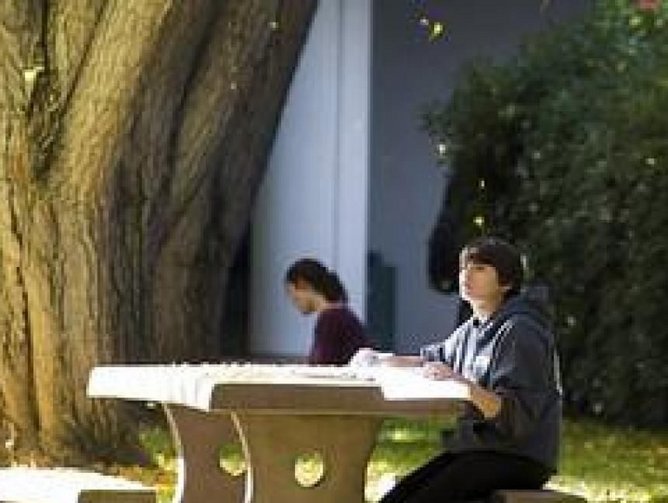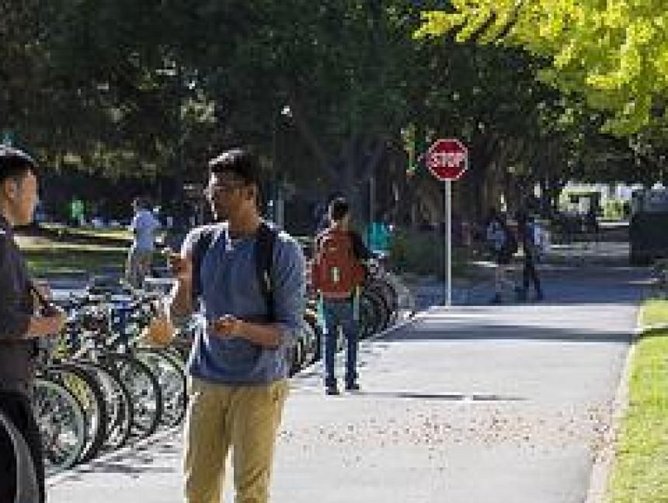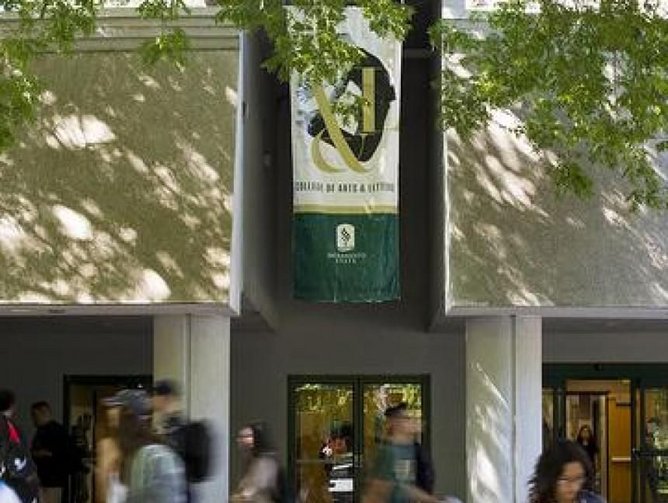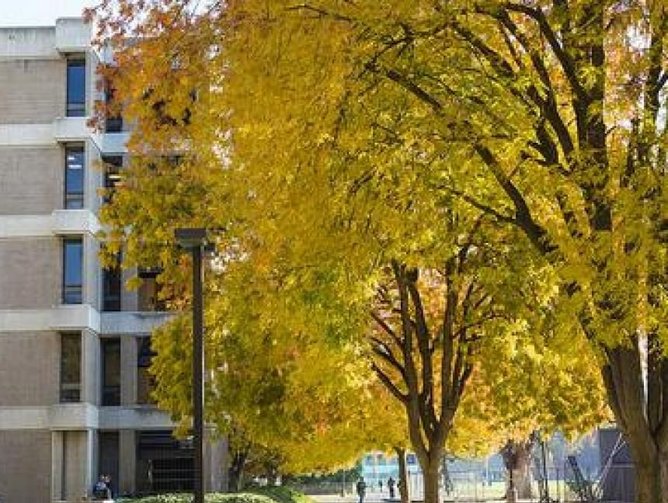The IRT division at Sac State aids the success of its faculty, students and staff by providing a toolbox of applications and data, helping to empower the entire University through access to IT services. We spoke to Interim Vice President and CIO Christine Miller to find out more.
There is no shortage of determination at California State University, Sacramento.
With 30,000 students and more than 3,000 staff on its books, aligning a common vision and instilling a culture of equal access to game-changing IT services is no easy task.
Indeed, President Robert Nelsen’s vision for Sac State comprises four bold components, the first revolving around a highly progressive target to increase the four year graduation rate from nine to over 30 percent.
The other components comprise diversification of revenue streams (a challenge for many state universities), greater engagement in the wider community to support student career prospects, and boosting diversity and inclusion.
For Sac State’s Information Resources and Technology (IRT) division, helping students to drive towards successful degree completion via technological innovations has been the overriding priority in recent years. Enter Christine Miller, who has been steadily raising the profile of technology at Sac State since first arriving in 2014 as Associate Chief Information Officer, and now as interim Vice President for Information Technology and Chief Information Officer. It is her job to ensure IRT provides the tools required for students to not only achieve their goals, but achieve them as part of a process that is both timely and straightforward.
“For the past few years, we have been very focused on student success related projects, pushing towards the goal of reducing time to degree,” Miller explains. “As a University, we have always worked to enhance student success, but now we are collaborating and working cross-departmentally in new and nimble ways to accomplish this four-year graduation goal. We are working harder than ever on a campus-wide scale, which is helping to create a more inclusive culture.”
Miller and IRT’s scope is extremely broad. Operating a team of 100 staff with a $10 million budget, the team’s expertise includes management of enterprise systems, campus applications, identity management, cyber security, technology service centers, websites, mobile apps, reporting, learning space provision, wireless and other infrastructure.
Faster, smarter
A large part of IRT’s recent energy has been channelled into implementing the Sac State Graduation Ecosystem, encompassing a series of integrated tools backed by analytic capability to help students succeed faster.
Central to this is the KEYS to Degree Toolbox, a suite of online tools designed to help students manage all aspects of their University experience – from scheduling their courses, managing financial aid, to assessing their progress via real-time dashboards, and, ultimately applying for graduation.
Short for ‘Kit to Empower Your Success,’ the KEYS to Degree Toolbox includes the Smart Planner program, a bolt-on to Oracle’s PeopleSoft enterprise system from The Burgundy Group that was launched at Sac State in fall of 2016. “This helps our students, a large proportion of whom are first generation, to set a semester-by-semester plan using a guided roadmap to achieve academic goals and finish on time,” Miller adds. “And while we continue to collaborate with colleagues in Academic Affairs and Student Affairs to build all of our degree programs in the tool, we’ve reached a threshold of 8,500 students who have tried using Smart Planner, which is around 40 percent of those who are currently eligible.”
Miller communicated the University goal to complete implementation of Smart Planner, i.e. make all degree programs available by the end of spring 2017. Academic Affairs, Student Affairs, and IRT each play an ongoing role in making Smart Planner and KEYS to Degree ubiquitous at Sac State. A Smart Planner dashboard developed in Tableau allows anyone to see detailed metrics about Smart Planner usage and adoption rates by college and degree program.
It is this integration of different elements from various vendors which is setting Sac State apart from other state universities. “There are other universities who are implementing these kinds of tools, but what makes us different is that we are packaging this into a single toolbox and using very deliberate marketing, communications and training strategies to help build this into our culture,” Miller continues. “There is something for everyone here; the goal of the ecosystem is to support and facilitate the activities of students, faculty, staff, and administrators.”
This is an important observation, for it is not only students who are leveraging the power of the Graduation Ecosystem tools. Advising staff can access many of the features and use available data to better guide their students. As Smart Planner facilitates the planning and logistics of registration – formerly a more manual process – it frees advisors to focus on more personalized conversations about students’ learning goals and overall campus experience.
Data driven
“A side benefit of Smart Planner and other Graduation Ecosystem tools is that it provides us with extremely valuable data,” Miller reveals, pointing to multiple analysis software programs from vendors that work alongside IRT’s own Tableau dashboard.
The first is Ad Astra’s Platinum Analytics, which will ingest data generated by students using Smart Planner to help Sac State make predictions about course demand. Another program leveraged is Illume by Civitas Learning, a predictive analytics suite that identifies students who may benefit from interventions in order to stay on track. “We can use data to contact students in targeted ways, based on what we know about their progress, which is a more proactive model of student support,” Miller adds.
As Interim CIO, Miller is a champion for data to constructively inform decision making in a strategic way at all levels of the University. As with many businesses across myriad industries, data is becoming one of the most vital assets an organization possesses. How data-driven decision making is valued and used could well prove the difference between success and failure.
Provision
Alongside the virtual Graduation Ecosystem, a great number of physical assets are also helping students to maximize achievement.
“IRT is based in a building called the Academic Information Resources Center (AIRC), which is one of the only 24/7 buildings on campus, with hundreds of seats and spaces for individual and group study – what we call informal learning spaces,” describes Miller.
“We also offer several large computer labs across campus, and a service desk which we are currently transforming into an integrated service center, similar to the Apple Genius Bar model. Our goal is to deliver a one-stop experience to meet faculty, staff and student technology needs, including collaborative technologies so they can practice presentations, test and explore new and emerging technologies, and receive expert troubleshooting help as well.”
With many undergraduates commuting into Sac State, IRT’s laptop checkout has proven immensely popular. The past year has seen some 70,000 checkouts of the 200 devices held, with Miller confirming IRT’s intention to grow the inventory based on demand. Students may use the laptop checkout program to view lecture material, which can also be accessed remotely through the Mediasite lecture capture system – which IRT describes as ‘expanding the classroom.’
Ever evolving features on mobile are also further enhancing flexibility. “We are always trying to make additions and improvements to our Sac State Mobile app,” continues Miller. “Among the many features of the app, probably most important is the ability for students to register for classes, and view real-time parking status before even arriving on campus. We are also looking to add other functionality to the app, such as ride sharing to help ease traffic congestion.”
All of this is powered by a robust WiFi system, covering nearly 100 percent of the Sac State campus.
Access
Much of Miller’s focus has been on provisioning IT for as many students as possible, removing barriers to access, and fostering a culture of inclusive learning. A key component of this is e-learning.
“E-learning is vital here because we are committed to reducing barriers to learning and graduation, especially since we serve a student population who often have work and family commitments,” Miller explains. “We want to offer blended, flexible options, and at the moment have around 5,000 hybrid courses available in our learning management system.”
Sac State is currently testing two options for its next-generation learning management system (LMS); this after more than three months rigorously researching and engaging with faculty, students, staff and vendors. This broad feedback will inform whether D2L's Brightspace or Instructure's Canvas will be recommended to President Nelsen in late spring. The new LMS will mark an important step forward in meeting current and emerging teaching and learning needs, and should provide new opportunities to enhance online course delivery.
Information about courses offered by Sac State is now communicated via a brand new online course catalog, developed using CourseLeaf from Leepfrog Technologies. Simple to navigate and sleeker in appearance compared with the 2016/2017 academic year, the 2017/2018 catalog is a one-stop course shop for current and prospective students.
“I think this is a fabulous tech-win for the campus,” Millers says. “It is truly a next-generation catalog, and will improve the quality of our data as well as deliver an improved user experience.”
Improved communications and access to information could well be a deciding factor for prospective students when choosing whether to make Sac State their future. With a strong IT foundation supporting it, the University appears well positioned to offer the resources necessary to push hard towards its Finish in Four graduation goal.
For Miller, the future of IRT must be an agile one in order to keep up with changing times. She concludes: “We found that we can’t spend two years working on a project and find out that goals have changed by the time we deliver the solution – technology moves quickly, and we need to be more nimble as an organization to best meet campus needs.”
“These are certainly interesting times, and we are eager to see how technologies such as the Internet of Things will continue to shape our strategy. We want technology to be at our students’ fingertips, helping to make their experience seamless. It is an ongoing challenge, but also a tremendous and exciting opportunity.”





